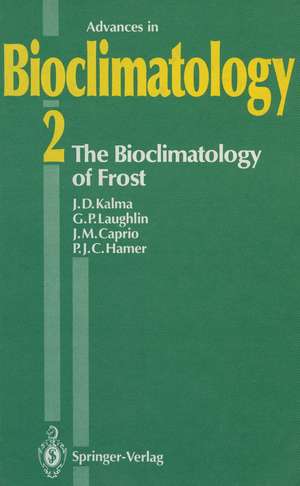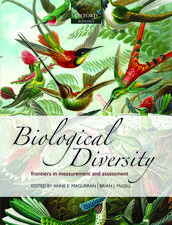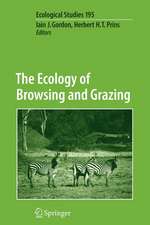The Bioclimatology of Frost: Its Occurrence, Impact and Protection: Advances in Bioclimatology, cartea 2
Contribuţii de J. D. Kalma, G.P. Laughlin, J.M. Caprio, P.J.C. Hameren Limba Engleză Paperback – 20 noi 2013
Preț: 634.18 lei
Preț vechi: 746.09 lei
-15% Nou
Puncte Express: 951
Preț estimativ în valută:
121.39€ • 131.90$ • 102.03£
121.39€ • 131.90$ • 102.03£
Carte tipărită la comandă
Livrare economică 21 aprilie-05 mai
Preluare comenzi: 021 569.72.76
Specificații
ISBN-13: 9783642634802
ISBN-10: 364263480X
Pagini: 168
Ilustrații: XVII, 144 p. 23 illus.
Dimensiuni: 155 x 235 x 9 mm
Greutate: 0.25 kg
Ediția:Softcover reprint of the original 1st ed. 1992
Editura: Springer Berlin, Heidelberg
Colecția Springer
Seria Advances in Bioclimatology
Locul publicării:Berlin, Heidelberg, Germany
ISBN-10: 364263480X
Pagini: 168
Ilustrații: XVII, 144 p. 23 illus.
Dimensiuni: 155 x 235 x 9 mm
Greutate: 0.25 kg
Ediția:Softcover reprint of the original 1st ed. 1992
Editura: Springer Berlin, Heidelberg
Colecția Springer
Seria Advances in Bioclimatology
Locul publicării:Berlin, Heidelberg, Germany
Public țintă
ResearchCuprins
1 Introduction.- 2 The Occurrence of Frost: Types, Distribution and Prediction.- 2.1 Frost Types.- 2.2 Distribution of Frost.- 2.3 Climatic Change and Frost.- 2.4 Frost Prediction.- 3 Micro-Scale Processes.- 3.1 Introduction.- 3.2 General Principles.- 3.3 Examples of Micro-Scale Processes.- 4 Meso-Scale Processes.- 4.1 General Characteristics of Nocturnal Cooling: A Case Study.- 4.2 Katabatic Drainage.- 4.3 Ventilation and Stagnation.- 4.4 Drainage, Ventilation and Stagnation Effects in Relation to Observational Data.- 4.5 Development of Nocturnal Inversion Layer.- 4.6 A Boundary Layer Model for Frost Prediction.- 5 Regional Scale Frost Risk Mapping.- 5.1 Introduction.- 5.2 A Three-Dimensional Numerical Model for Frost Risk Mapping.- 5.3 Frost Risk Mapping for Landscape Planning: A Case Study.- 6 Remote Sensing for Frost Risk Mapping and Frost Prediction.- 6.1 Introduction.- 6.2 Aircraft Thermal Imagery.- 6.3 Satellite Thermal Imagery.- 6.4 Satellite Data for Frost Forecasting.- 7 Biological and Phenological Aspects of the Relationship Between Low Temperature, Plant Growth and Crop Development.- 7.1 Plant Hardiness.- 7.2 Low Temperature as Plant Stress.- 7.3 Mechanisms of Frost Resistance.- 7.4 Chilling Damage to Extra-Tropical and Tropical Crops.- 7.5 Seasonal Variation in Cold Resistance.- 7.6 Rest Breaking Mechanisms and Chilling Requirements.- 8 Weather and Winterkill of Wheat: A Case Study.- 8.1 Introduction.- 8.2 Procedures and Results.- 9 Direct, Active Methods of Frost Protection.- 9.1 Introduction.- 9.2 Heaters.- 9.3 Wind Machines.- 9.4 Fog.- 9.5 Sprinkler Irrigation.- 10 A Model to Predict Required Rates of Water Application in Overhead Sprinkler Irrigation.- 10.1 Model Development.- 10.2 Model Validation.- 10.3 Application to “Pulsed” Frost Protection.-11 Indirect, Passive Methods of Frost Protection.- 11.1 Cultivar Selection.- 11.2 Agronomic Management Techniques.- 11.3 Manipulating Plant Phenology.- 12 Concluding Remarks.- Acknowledgements.- References.





















